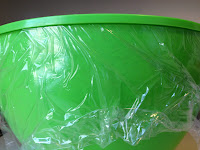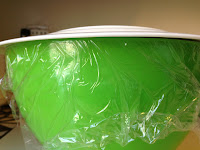"You know it's a good recipe if it starts with a stick of butter." Paula Deen. The no-knead version of this buttery, savory bread can be jazzed up with countless add-in and shaped into fun forms. Plus, no stand or hand mixer required!
260 calories per bun (3,120 calories per batch)
Active time: 15 minutes
Total time: Overnight proof required, about 27 hours
*What's great about this recipe is that after you've made the dough, you can create various shapes with it, adjusting the portions to your liking. And, the dough should be good for about 1 week in your fridge so you can bake it up fresh throughout the week.
ingredients
3/4 cup lukewarm water
2 1/4 teaspoons yeast
2 teaspoons salt
4 eggs, lightly beaten
1/4 cup agave nectar (honey or maple syrup would be fine)
3/4 cup unsalted butter, melted and cooled (this is equal to 1.5 sticks)
3 3/4 cups all-purpose flour
2 teaspoons salt
4 eggs, lightly beaten
1/4 cup agave nectar (honey or maple syrup would be fine)
3/4 cup unsalted butter, melted and cooled (this is equal to 1.5 sticks)
3 3/4 cups all-purpose flour
preparation
the day before:
1. Melt the butter in a microwave safe bowl for about 90 seconds, set aside to cool. (See step 1 of "lavender greek yogurt cupcakes" for more on melting butter.)
2. In a medium bowl (or 2 cup Pyrex measuring cup), combine the lukewarm water, yeast, and a pinch of sugar. Set aside for 10 minutes to allow the yeast to ferment. The photo on the bottom right shows the foam that develops during the yeast proofing. No foam = dead yeast = start over. Likely culprits: old yeast or water that was too hot.
3. In a large bowl, combine the flour and salt. Set aside.
4. Add the eggs and agave to the butter, stirring to incorporate.
the day before:
1. Melt the butter in a microwave safe bowl for about 90 seconds, set aside to cool. (See step 1 of "lavender greek yogurt cupcakes" for more on melting butter.)
2. In a medium bowl (or 2 cup Pyrex measuring cup), combine the lukewarm water, yeast, and a pinch of sugar. Set aside for 10 minutes to allow the yeast to ferment. The photo on the bottom right shows the foam that develops during the yeast proofing. No foam = dead yeast = start over. Likely culprits: old yeast or water that was too hot.
3. In a large bowl, combine the flour and salt. Set aside.
4. Add the eggs and agave to the butter, stirring to incorporate.
5. Pour the butter and yeast mixtures into the bowl containing the flour.
6. Using a spatula, stir the mixture in a clockwise position, making sure you pull from the bottom of the mass, until a fairly cohesive mass forms.
7. Using your hands, knead the dough inside of the bowl, pulling up and tucking the dough from all four sides to form a ball.
8. Cover with plastic wrap and loosely place the bowl's lid (or a plate) on the top. The container should not be airtight.
9. Let sit on a counter top to proof, about 2 hours.
10. Place the bowl in the refrigerator for at least 24 hours.
the day of:
11. Remove the dough from the fridge and shape into rolls or cottages. Place on a parchment or silpat lined baking sheet.
11b. Or, pull out your brioche/loaf/baking pan. Grease the wells, and evenly shape the dough into balls. Place the ball in the well-greased well, pushing down evenly to distribute the dough. (I used a Nordicware baking pan.)
12. Cover loosely with plastic wrap and set aside for about 2 hours. This is the dough's second proof.
13. With about 30 minutes remaining in the final proof, preheat the oven to 350 degrees.
14. Brush the loaves or rolls with an egg wash.
15. Bake for 40 minutes, or until the bread is golden brown and sounds hollow when tapped. (See step 20 of "classic baguette" for more on testing for doneness.)
16. If you used a brioche/loaf/baking pan, remove the bread to cool.
Original recipe found here.


























No comments:
Post a Comment